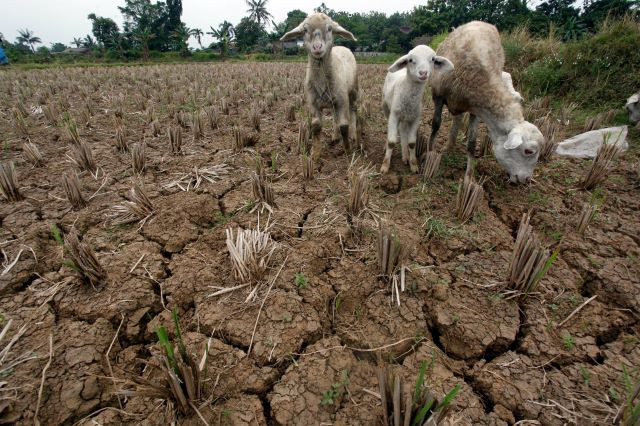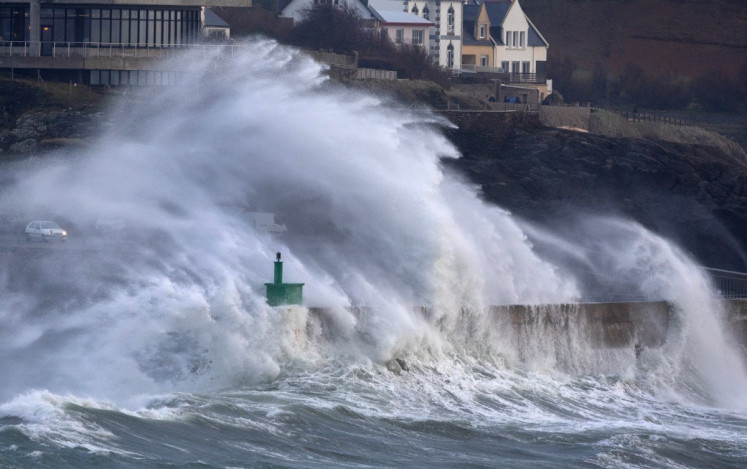Popular Reads
Top Results
Can't find what you're looking for?
View all search resultsPopular Reads
Top Results
Can't find what you're looking for?
View all search resultsEl Nino has ended: Australia's weather bureau
The cycle between the two is hugely important for farmers worldwide. El Nino generally brings hotter, drier weather to eastern Australia and Southeast Asia and wetter conditions to the Americas, while a La Nina has the opposite effect.
Change text size
Gift Premium Articles
to Anyone
 Parched land: Goats belonging to a local resident roam on a dried out rice field in Jonggol village, Bogor regency, West Java on Aug. 2, 2023. The Meteorology, Geophysics and Climatology Agency has forecast that El Nino weather phenomenon will affect 63 percent of the country’s territory this year.
(Antara/Yulius Satria Wijaya)
Parched land: Goats belonging to a local resident roam on a dried out rice field in Jonggol village, Bogor regency, West Java on Aug. 2, 2023. The Meteorology, Geophysics and Climatology Agency has forecast that El Nino weather phenomenon will affect 63 percent of the country’s territory this year.
(Antara/Yulius Satria Wijaya)
A
n El Nino weather event has ended, Australian weather authorities said on Tuesday, adding that they were uncertain if a La Nina phenomenon would form later this year, as other forecasters have predicted.
The cycle between the two is hugely important for farmers worldwide. El Nino generally brings hotter, drier weather to eastern Australia and Southeast Asia and wetter conditions to the Americas, while a La Nina has the opposite effect.
"El Nino has ended," Australia's Bureau of Meteorology said, after the weather phenomenon had formed in the middle of last year following three years of La Nina.
Warmer sea surface temperatures in the central and eastern tropical Pacific cause El Nino and cooler temperatures lead to La Nina, which a U.S. government weather forecaster this month gave a 60% chance of emerging in the second half of 2024.
The sea surface has been cooling since December and oceanic and atmospheric indicators now show the El Niño–Southern Oscillation has returned to neutral, the Australian weather bureau added.
"Climate models indicate ENSO will likely continue to be neutral until at least July 2024," it said, using the formal . name, the El Niño Southern Oscillation, that describes the switch between the two phases.
While some climate models predict a flip to La Nina later this year, the bureau said it was uncertain whether this would happen and urged caution about such forecasts.









